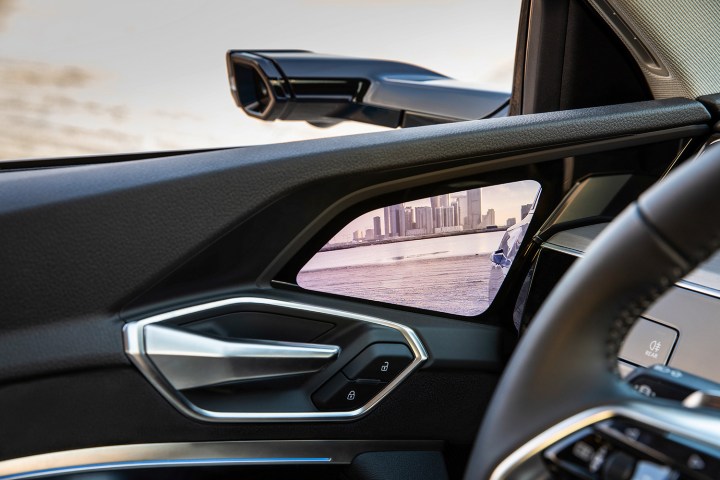
Audi had to make one major change to the electric E-Tron crossover before releasing the model in the United States. The rearview cameras available worldwide are illegal here, so the American-spec model settles for conventional door mirrors. We might not miss out on this feature for long, because the National Highway Traffic Safety Administration (NHTSA) announced it will finally begin testing the technology to learn more about what it is, and what it does.
The agency plans to carry out a series of tests to gain more information about how cameras affect “driving behavior and lane-change maneuver execution,” according to Reuters. It will run similar tests using cars fitted with standard mirrors, and it will compare the two data sets to determine whether the new technology is safe to use. If the results are positive, it’s not too far-fetched to imagine automakers will be allowed to sell camera-equipped cars in the U.S.
The NHTSA began looking into the technology in 2014 when a group of major automakers represented by the Alliance of Automobile Manufacturers asked for permission to replace mirrors in passenger cars. Mercedes-Benz parent company floated the idea of fitting cameras to heavy trucks (like the ones made by its Freightliner brand) the following year. The upcoming round of testing will focus on cars, and the agency will look into bigger vehicles like trucks at a later date.
Digital Trends spent time behind the wheel of a European-spec E-Tron equipped with the technology. It’s relatively simple: Small, rear-facing cameras are mounted on pods installed where you’d normally find the mirrors. They transfer their footage to touch-sensitive screens integrated into the door panels. The driver can move the image around by tapping the screen. It’s a cool feature, though looking down at the door panel to see what’s behind you takes a little bit of time to get used to.
Audi isn’t the only company dabbling in this futuristic technology, and the feature isn’t as new as it might sound. The limited-edition Volkswagen XL1 released in 2013 used cameras because it needed to be as aerodynamic as possible, and mirrors create drag. In Japan, Lexus offers the current-generation ES with a similar system, and countless concept cars presented during the last decade have gone mirror-less.



